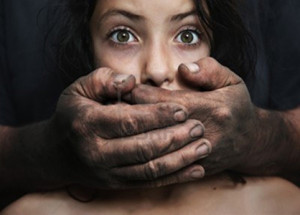 Paedophilia is a Greek word meaning ‘like’ (philio) ‘children’ (paedo). It is listed among the symptoms of Paraphilic Disorders, a category of ‘illness’ prone to achieve sexual satisfaction or a very high sexual desire out of the normal boundaries. Other examples of paraphilic disorders include voyeurism, frotteurism, exhibitionism etc. In the tome of psychiatry i.e: The Diagnostic and Statistical Manual of Mental Disorders, fifth edition, paedophilia is defined in a quite specific way. The doer or afflicted person has fantasies of sexual lust and strong sexual desire involving activities with pre-pubertal children.
Paedophilia is a Greek word meaning ‘like’ (philio) ‘children’ (paedo). It is listed among the symptoms of Paraphilic Disorders, a category of ‘illness’ prone to achieve sexual satisfaction or a very high sexual desire out of the normal boundaries. Other examples of paraphilic disorders include voyeurism, frotteurism, exhibitionism etc. In the tome of psychiatry i.e: The Diagnostic and Statistical Manual of Mental Disorders, fifth edition, paedophilia is defined in a quite specific way. The doer or afflicted person has fantasies of sexual lust and strong sexual desire involving activities with pre-pubertal children.
Paedophilia patients will act upon the strong sexual desire and this tendency will either result in the patient having stress or giving rise to a myriad of social problems to themselves. The patient’s age should be at least 16 years old or at least five years older than the victim. The term ‘patient’ is used here because the explanation given next is from the psychiatric-medical point of view. However, this does not reject the connotation of misconduct from the legal, moral or religious angle.
Paedophilia is a clinical diagnosis prescribed by the Psychiatry Specialist or Clinical Psychologist, a result from systematic history taking of the patient, observation and a number of psychometric instruments. There is yet to be a blood test or radiology test that can give a major impact in diagnosing paedophilia. Paedophiliacs rarely come voluntarily to get treated for his sexual inclinations. Psychiatric help comes into play after the patient is brought in through the course of law.
50 to 70% of the patients also have other paraphiliac inclinations such as voyeurism (feeling of extreme arousal looking or spying on naked children), exhibitionism (having sexual satisfaction by showing their private parts to children) and frotteurism (achieving sexual satisfaction by rubbing their genitals to the children’s body). The ease of access to the internet gave the patients more space to continue fulfilling their sexual desires, hunt for victims through social media or share lewd materials with other paedophiliacs.
Studies have shown that pedophiliacs mostly feel inferior, keep to themselves, have low self-esteem, and stunted emotional conduct. They also have problems in meaningful social interaction situations. They are less assertive and consequently, slowly build passive-aggressive traits inside themselves, i.e, a concealed burning anger, but will rather release subtly and passively. Almost all paedophiliacs have a history of psychologically trauma during childhood.
Experts disagree in the potential of paedophiliacs to recover completely. Most countries focus on preventing repetitive acts of paedophilia. Many aspects of treatment exist such as libido-reducing drugs taking down the testosterone levels a few notches using antiandrogenic therapy. Other medications tried are Selective-Serotonine Reuptake Inhibitors (SSRIs). Psychotherapy treatments are also important. There are also controversial treatments, attempting to change the individuals sexual orientation so that they avoid children i.e, Aversion Conditioning and Masturbatory Reconditioning. Studies and treatments of paedophilia in Malaysia is not as vast in the West. Special psychiatric units involved are Forensic Psichiatry and Sexual Health Medicine.
The technological advancements nowadays are double-edged swords, having positive and negative outcomes. The rapidity of materialistic development have made humans forget the divine. A bio-psycho-socio-spiritual approach is the most potent approach in preventing and treating every illness. A harmonious family structure, closely knit and receptive society and a true religious system will produce a morally right person, clear of mental and emotional confusion.
Dr Zul Azlin Razali is a psychiatrist and Senior Medical Lecturer in Universiti Sains Islam Malaysia. This article was translated by Azizul Ismie Mohd Puad.
Reference:
- The Diagnostic and Statistical Manual of Mental Disorders, 5th Edition. American Psychiatric Association. 2013
- Hall RCW et al. A Profile of Pedophilia: Definition, Characteristics of Offenders, Recdivism, Treatment Outcomes, and Forensic Issues. Mayo Clin Proc. 2007. 82(4): 457-471
- Quayle E. and Taylor M. Paedophiles, Pornography and the Internet: Assessment Issues. British Journal of Social Work. 2002. 32: 863-875.
[This article belongs to The Malaysian Medical Gazette. Any republication (online or offline) without written permission from The Malaysian Medical Gazette is prohibited.]
